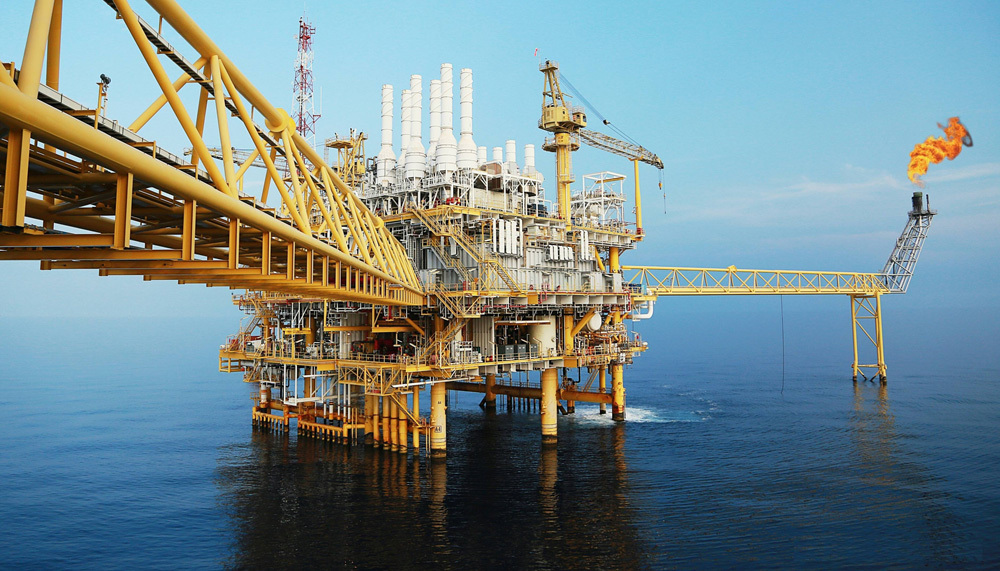
INDUSTRY APPLICATION
Oil Exploration & Extraction

The exploration and extraction of oil and natural gas is a complex and crucial process involving multiple stages and technologies. First, geological exploration is conducted to analyze the geological characteristics of an area, including rock layers, structures, and history, to identify potential oil and gas reservoirs. Data is collected using gravity, magnetic, and electromagnetic methods to create images of underground structures. For example, seismic exploration uses sound waves generated by vibrations that propagate and reflect through underground rock layers to map subsurface structures. Chemical analysis of soil, rocks, and groundwater is also conducted to search for chemical traces of oil and gas. These methods can help identify potential oil and gas reservoirs.
Next, exploratory drilling and extraction are carried out. Exploratory wells are drilled in potential oil and gas areas to directly sample underground rock layers and fluids. Core samples and fluid analysis from the wells can determine the reserves and properties of oil and gas. Based on exploration data, wellbores are designed, and drilling locations are determined. Development wells are more complex than exploratory wells and require consideration of optimal extraction methods.
Advanced drilling techniques, such as directional drilling and horizontal drilling, are used to increase recovery rates and reduce environmental impact. Once a well is completed, oil and gas flow to the surface through wellhead equipment and undergo preliminary treatment to remove impurities. Various extraction methods are employed, including natural energy extraction, mechanical extraction (such as using pump jacks), and enhanced recovery techniques (such as water flooding, gas injection, and chemical flooding).
Then, during the exploration and extraction process, detailed Environmental Impact Assessments (EIA) are needed to identify and mitigate potential environmental impacts. Real-time monitoring technology is used to monitor environmental parameters during oil and gas production, such as seismic activity, leaks, and pollution. Environmental management plans are implemented to ensure compliance with environmental regulations and to minimize environmental impact. Finally, after production ends, well abandonment and plugging are carried out to ensure the wellhead is safely sealed to prevent pollution.
Technological advancements: In recent years, with the advancement of technology, the exploration and extraction of oil and natural gas have become more efficient and environmentally friendly.
For example
Offshore oil and gas extraction: Floating platforms, drilling ships, and subsea production systems make it possible to develop deep-sea oil fields.
Unconventional resource extraction: This includes the extraction of shale gas and shale oil using advanced technologies such as hydraulic fracturing and horizontal drilling.
The exploration and extraction of oil and natural gas are essential components of the energy industry, involving extensive scientific and technological measures and stringent management practices. With continuous technological development, this field requires various detection and automated control instruments.
Recommended Instruments
Product->Switch & Controller->Tuning Fork Switch
Vibrating Tuning Fork Level Switch Liquid Solid Particles and Powders
Magnetic Level Gauge
Side Mounted High Pressure 6MPa to 40MPa Magnetic Level Gauge With Magnetic Liquild Level Sonser
Product->Level Gauge->Magnetic Level Gauge
Top-mounted UHC Anti Corrosion Design Magnetic Tank Level Meter With Level Swtich
Product->Level Gauge->Capacitive Level Gauge
Product->Level Gauge->Capacitive Level Gauge
HBY 304 Stainless Steel or PTFE Anti-corrosion Design Capancitance Water Level Meter
Product->Flowmeter->Rotary Flowmeter
High Accuracy Steel Pipeline Rotameter Metal Tube Float Rotameter For Gas and Liquid
Product->Switch & Controller->Float Switch
UHK Magnetic Multipoint Float Liquid Level Switch Water Level Controller
Product->Switch & Controller->Cable Float Level Switch
Electrical Submersible Cable Float Level Switch With Customized Cable Length
Product->Switch & Controller->UQK Level Gauge
Industrial High Temperature Stainless Steel UQK Magnetic Float Level Switch Water Level Controller
Product->Transmitter->Differential Pressure Transmitter





